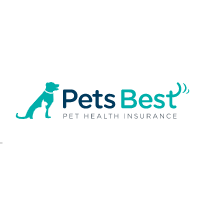Which pets cost the morst to insure?
Are you curious about which pets are the most expensive to insure? This article reveals the surprising truth about the pets that can cost you the most in insurance premiums. Find out which pets can put a dent in your budget and how to navigate the world of pet insurance.
Read more Secured with SHA-256 Encryption


Save Money by Comparing Insurance Quotes
Compare Free Pet Insurance Quotes Instantly




Table of Contents
Table of Contents


Insurance Content Managing Editor
Daniel S. Young began his professional career as chief editor of The Chanticleer, a Jacksonville State University newspaper. He also contributed to The Anniston Star, a local newspaper in Alabama. Daniel holds a BA in Communication and is pursuing an MA in Journalism & Media Studies at the University of Alabama. With a strong desire to help others protect their investments, Daniel has writt...
Daniel S. Young


Licensed Insurance Producer
Dani Best has been a licensed insurance producer for nearly 10 years. Dani began her insurance career in a sales role with State Farm in 2014. During her time in sales, she graduated with her Bachelors in Psychology from Capella University and is currently earning her Masters in Marriage and Family Therapy. Since 2014, Dani has held and maintains licenses in Life, Disability, Property, and Casualt...
Dani Best
Updated January 2025
Pet insurance is becoming increasingly popular among pet owners, as it provides financial peace of mind when it comes to the well-being of our furry friends. However, it’s important to note that not all pets are equal in terms of the cost of insurance. Several factors come into play when determining the premium rates for pet coverage. In this article, we will delve into the various aspects that influence the cost of pet insurance and highlight the types of pets that tend to have higher insurance rates.
Understanding Pet Insurance
Pet insurance is a type of coverage that helps mitigate the expenses associated with veterinary care. Just like human health insurance, pet insurance policies offer different levels of coverage and reimbursement options.
When it comes to our beloved pets, we want to ensure that they receive the best care possible. However, veterinary bills can quickly add up, especially in the case of unexpected accidents or illnesses. This is where pet insurance comes in handy, providing a safety net for pet owners.
What is Pet Insurance?
At its core, pet insurance is designed to protect pet owners from the financial burden of unexpected veterinary bills. It offers peace of mind, knowing that you won’t have to make difficult decisions about your pet’s health based solely on financial considerations.
Depending on the policy, pet insurance can cover a wide range of expenses. This includes accidents, such as broken bones or injuries from car accidents, as well as illnesses like cancer or diabetes. Some policies even cover hospitalizations, surgeries, and routine preventive care, such as vaccinations and check-ups.
With pet insurance, you can rest assured that your furry friend will receive the necessary medical attention when they need it most, without having to worry about the financial implications.
Why is Pet Insurance Important?
Pet insurance is important because it allows pet owners to provide the best possible care for their furry companions without being limited by financial constraints. It ensures that your pet receives prompt and quality medical attention, which can make all the difference in their overall health and well-being.
Imagine a scenario where your beloved pet suddenly falls ill or gets injured. Without pet insurance, you may find yourself facing a difficult decision: do you go ahead with the recommended treatment, potentially putting a strain on your finances, or do you opt for a less expensive option, compromising your pet’s well-being?
With pet insurance, you don’t have to make such compromises. It gives you the freedom to choose the best course of action for your pet’s health, knowing that the financial aspect is taken care of. This can lead to better outcomes and a higher quality of life for your furry companion.
Moreover, pet insurance also encourages pet owners to seek preventive care for their pets. Regular check-ups and vaccinations can help detect and prevent potential health issues before they become serious. With the financial support of pet insurance, you are more likely to stay on top of your pet’s preventive care needs, ensuring their long-term well-being.
In conclusion, pet insurance is an invaluable tool for pet owners who want to provide the best care for their furry companions. It offers financial protection, ensuring that you can make decisions based on what’s best for your pet’s health, rather than what you can afford. So, if you haven’t already considered pet insurance, now is the time to explore your options and give your pet the protection they deserve.
Free Pet Insurance Comparison
Compare Quotes From Top Companies and Save
Secured with SHA-256 Encryption
Factors Influencing the Cost of Pet Insurance
When it comes to determining the cost of pet insurance, several factors come into play. Understanding these factors can help you make an informed decision when choosing a policy for your furry friend.
Species and Breed
The species and breed of your pet significantly impact the cost of insurance. Certain breeds are more prone to hereditary or congenital health conditions, making them riskier to insure. For instance, English Bulldogs and Maine Coon cats are known to have higher insurance rates due to their specific health issues. These breeds often require specialized care and treatment, which can drive up the cost of insurance.
On the other hand, some breeds are generally healthier and less prone to health problems. For example, mixed-breed dogs are often considered less risky to insure, as they have a more diverse genetic makeup, reducing the likelihood of inheriting specific health conditions. This can result in lower insurance premiums for mixed-breed pets.
Age and Health Condition
Age plays a crucial role in determining pet insurance premiums. Younger pets generally have lower insurance rates as they are seen as less likely to develop health issues. This is because younger animals are less likely to have pre-existing conditions or age-related ailments. Insuring a puppy or kitten can be more affordable compared to insuring an older pet.
Health condition also comes into play when determining the cost of pet insurance. Pets with pre-existing conditions often face higher premiums or even being excluded from coverage. This is because insurance companies consider these pets to be at a higher risk of requiring frequent medical treatment or costly procedures.
It’s important to note that some insurance providers offer coverage for pre-existing conditions, but these policies may come with higher premiums or waiting periods before the coverage becomes effective.
Location and Lifestyle
Where you live and how your pet lives also affect insurance costs. Veterinary costs can vary depending on regional factors, such as the cost of living and the availability of specialized veterinary care. If you live in an area with higher veterinary costs, you can expect your insurance premiums to reflect that.
Additionally, pets with an adventurous and active lifestyle may have higher insurance rates due to the increased risk of injuries. Breeds that are bred for agility or working roles, such as Border Collies or German Shepherds, are often more prone to injuries due to their high energy levels and intense physical activities. Insurance providers take this into consideration and adjust the premiums accordingly.
On the other hand, if your pet lives a more sedentary lifestyle and spends most of their time indoors, the risk of injuries or accidents may be lower. This can potentially result in lower insurance premiums.
By understanding these factors, you can better assess the cost of pet insurance and choose a policy that suits both your pet’s needs and your budget. Remember to compare different insurance providers, their coverage options, and their pricing to find the best fit for you and your furry friend.
The Most Expensive Pets to Insure
While the cost of pet insurance varies, certain pets tend to have higher insurance rates compared to others.
When it comes to insuring pets, dogs are often the most expensive. This is due to various factors that contribute to their higher insurance premiums. One of the main factors is the size of the dog. Larger breeds, such as Great Danes or Bernese Mountain Dogs, generally have higher premiums than smaller breeds. This is because larger dogs are more prone to developing certain health conditions, which can lead to increased medical expenses.
In addition to size, certain dog breeds are also more prone to specific health issues. For example, Bulldogs are known for their respiratory problems, which can result in higher insurance costs. These breed-specific conditions require specialized care and treatment, adding to the overall expenses of insuring a dog.
Cats, too, have their fair share of insurance considerations. While they may not be as expensive to insure as dogs, there are still factors that can affect their insurance rates. One of these factors is the breed of the cat. Specialized breeds, such as Siamese or Persian cats, can have higher insurance rates due to their susceptibility to breed-specific conditions. These conditions often require specialized treatment, which can drive up the cost of insurance.
Another factor that can impact the insurance costs for cats is whether they are allowed to roam outdoors. Cats that have the freedom to explore the outdoors are exposed to a higher risk of accidents or infectious diseases. As a result, insurance companies may charge higher premiums to cover the potential expenses associated with these risks.
When it comes to exotic pets, the insurance rates can be even higher. Exotic pets include reptiles, birds, and small mammals, which require specialized care and veterinary expertise. The unique needs of these companions can make their medical expenses more expensive, leading to higher insurance premiums.
Furthermore, the rarity of certain exotic species can also impact the cost of insurance. Since there may be a limited number of insurers providing coverage for these unusual pets, the competition is lower, resulting in higher premiums.
Ways to Reduce Pet Insurance Costs
Although pet insurance can be costly, there are ways to manage and potentially decrease the premiums. Taking the time to explore different options and strategies can help you find the right insurance plan for your pet while keeping your budget in mind. Here are some additional tips to consider:
Choosing the Right Insurance Plan
When it comes to pet insurance, not all plans are created equal. It’s important to compare different insurance providers to find a plan that suits your pet’s needs and your budget. Take into consideration factors such as coverage options, reimbursement rates, and deductibles. By carefully analyzing these aspects, you can ensure that you are getting the best value for your money.
In addition to comparing the basics, it’s also essential to read the policy’s terms and conditions thoroughly. Understanding any excluded conditions or limitations can help you make an informed decision about the coverage that will work best for your pet. By doing your due diligence, you can avoid any surprises or disappointments down the line.
Regular Vet Check-ups and Preventive Care
Prevention is key to reducing long-term medical expenses for your furry friend. Regular veterinary check-ups and preventive care, such as vaccinations and dental hygiene, can help identify and address potential health issues before they become costly problems. Many insurers offer discounts for pets with up-to-date preventive care, so not only will you be keeping your pet healthy, but you’ll also be saving money on insurance premiums.
During routine check-ups, your veterinarian can provide valuable guidance on maintaining your pet’s health. They can recommend specific preventive measures based on your pet’s breed, age, and lifestyle. By following their advice, you can ensure that your pet stays healthy and minimize the chances of needing expensive medical treatments in the future.
Healthy Lifestyle and Diet
Ensuring your pet leads a healthy lifestyle can have a positive impact on insurance premiums. Just like humans, pets benefit from regular exercise, a balanced diet, and weight management. These practices can help prevent obesity-related health conditions, demonstrating responsible pet ownership and potentially lowering insurance rates.
Regular exercise not only keeps your pet physically fit but also helps to stimulate their mind and prevent behavioral issues. A balanced diet that meets their nutritional needs is essential for overall health and can reduce the risk of certain medical conditions. Additionally, maintaining a healthy weight can prevent joint problems and other weight-related issues that may require expensive medical interventions.
By incorporating these habits into your pet’s daily routine, you not only promote their well-being but also show insurance providers that you are committed to their long-term health. This commitment can often result in lower insurance premiums.
While having pet insurance is a responsible choice, it’s essential to consider the individual needs of your pet, your budget, and the coverage options available. By understanding the factors that influence the cost of pet insurance and exploring ways to reduce premiums, you can make an informed decision that benefits both you and your beloved companion.
Frequently Asked Questions
What factors determine the cost of pet insurance?
The cost of pet insurance is determined by several factors such as the age, breed, and health condition of the pet. Additionally, the coverage options and deductible chosen by the pet owner can also affect the cost of insurance.
Which pets generally have higher insurance costs?
Pets that are more prone to certain health conditions or have a higher risk of accidents tend to have higher insurance costs. This typically includes breeds with a history of genetic disorders or larger pets that are more susceptible to injuries.
Are certain dog breeds more expensive to insure than others?
Yes, certain dog breeds are generally more expensive to insure due to their predisposition to specific health issues. Breeds such as Bulldogs, Great Danes, and Rottweilers often have higher insurance costs compared to smaller or mixed breed dogs.
Do cats or dogs have higher insurance costs on average?
On average, dogs tend to have higher insurance costs compared to cats. This is primarily because dogs are more likely to experience accidents or develop health conditions that require expensive veterinary care.
Can the cost of pet insurance vary between insurance providers?
Yes, the cost of pet insurance can vary significantly between different insurance providers. Each company may have its own pricing structure, coverage options, and factors they consider when determining premiums. It’s important to compare quotes from multiple providers to find the best coverage at a competitive price.
What are some ways to lower the cost of pet insurance?
To lower the cost of pet insurance, you can consider increasing the deductible, opting for a lower coverage limit, or choosing a policy with fewer add-ons. Additionally, enrolling your pet at a younger age and maintaining their overall health through regular veterinary care can also help reduce insurance costs.
Get a FREE Quote in Minutes
Insurance rates change constantly — we help you stay ahead by making it easy to compare top options and save.




